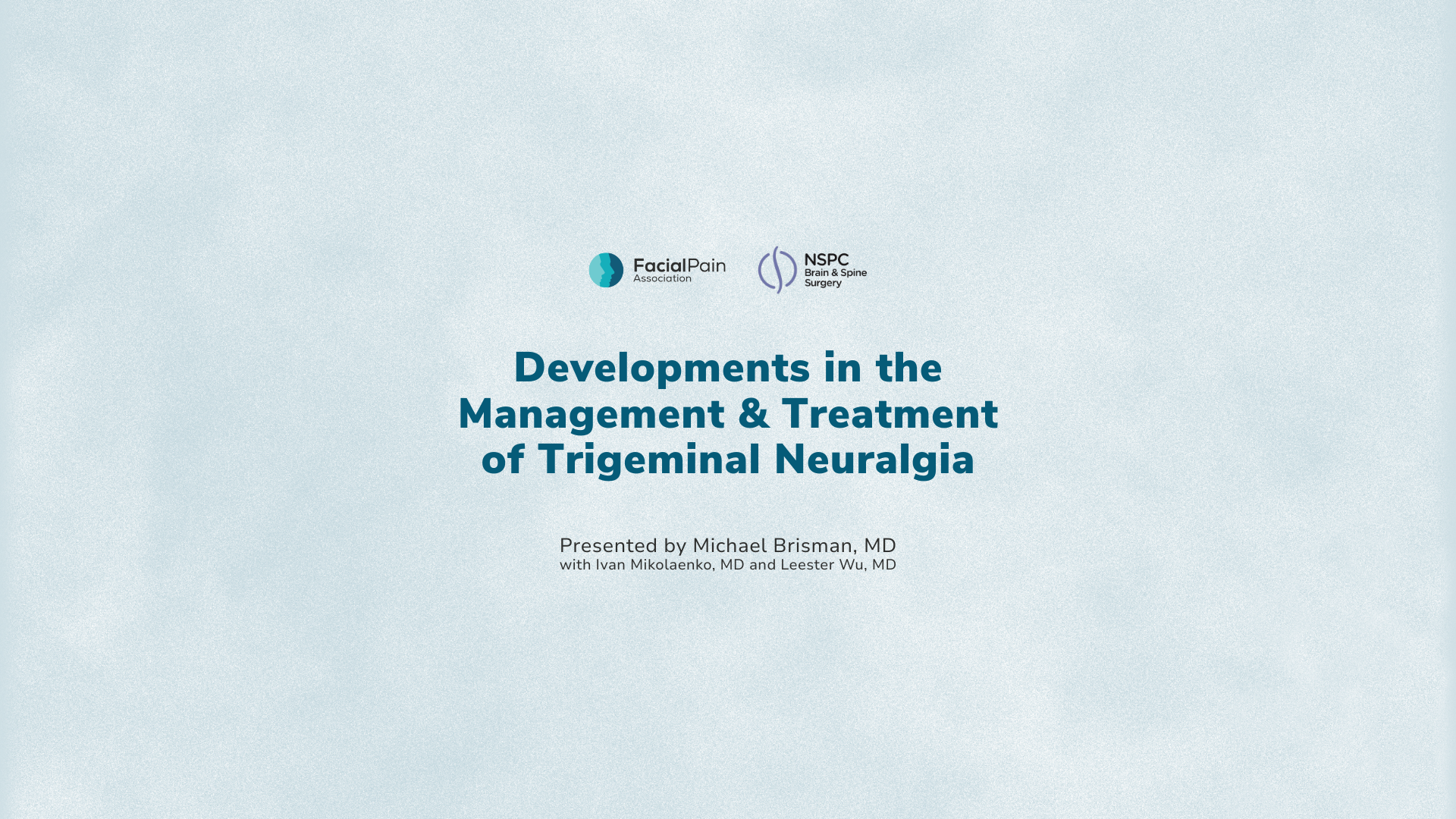Patient advice:
If you are experiencing an acute attack of pain symptoms, remember that narcotics usually will not work to relieve your pain. Furthermore, you may not be able to take more of your prescribed antiepileptic anticonvulsive drugs (opening or touching your mouth may be a tactile pain trigger, and these drugs enter your system too slowly).
In an emergency, seek medical attention at your local hospital that treats your condition. To avoid a prescription for narcotics, you may need to educate the emergency room (ER) staff about trigeminal neuralgia (TN). Some patients find it useful to keep a copy of these instructions with them to give to ER staff.
To the Senior Emergency Room Physician:
Recommended Crisis Management Plan for Patients Presenting with an Attack of Neuropathic Pain from Trigeminal Neuralgia
This patient is experiencing a trigeminal pain crisis, a true pain emergency, which brings them to the ER or urgent care. The patient might not be able to speak properly because it aggravates their pain. Also, any ambient stress has the potential to exacerbate, e.g. loud noise, blinding lights and odors.
- The key drug to use is an anticonvulsant that can be loaded intravenously. Phenytoin (Dilantin) was the first TN drug discovered.
- Use a 1-gram IV drip over 20 minutes with EKG & BP monitoring, which will break the pain cycle more than 90% of the time. Phosphenytoin can also be used. Then you can advise patients to take more of their prescribed oral anticonvulsive drugs.
- If Dilantin does not work, two other anticonvulsive drugs can be administered intravenously: levetiracetam (Keppra) or Lacosamide (Vimpat).
- While not proven in trials for TN treatment, they are in the same family of drugs and may be safely and quickly loaded intravenously.
Key Points:
- Neuropathic pain usually DOES NOT respond to opioids, narcotics, or standard analgesics.
- It is usually managed with PO anticonvulsants which take days to weeks to achieve an effective drug level. In the hospital setting, the patient has come to you because his or her pain has broken through the medication, because pain prevents them from taking PO meds, or they are not on the right drugs.
Immediate Action Required:
- Plan A: Administer phenytoin (Dilantin) 1 gram IV (IV access needs to be verified) over at least 20 minutes (with EKG and BP monitoring) to interrupt the pain cycle (or, alternatively, Phosphenytoin 1-gram Dilantin equivalent).
- Plan B: Administer Lacosamide (Vimpat) 200– 400 mg IV over 15 minutes with EKG and BP monitoring.
- Plan C: Administer levetiracetam (Keppra) 1000 mg IV over 5 minutes with EKG and BP monitoring.
Summary:
If the pain does not respond to Dilantin, then Keppra or Vimpat are also suitable substitutes since they are in the same family of drugs which can be rapidly administered safely by an IV solution/drip.
For more information:
- American Neurological Association: www.MyANA.org
- Facial Pain Association: www.FacePain.org
- Linskey ME. American College of Physicians (ACP) Smart Medicine. Trigeminal Neuralgia Module, 2012.
- Medication and the Emergency Room: www.FacePain.org/Blog/Medication-Emergency-Room/
- Zakrzewska JM, Linskey ME. Trigeminal neuralgia. BMJ. 2014 Feb 17;348:g474. doi: 10.1136/bmj.g474.










